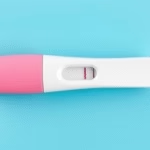We will be talking about implantation failure bleeding. This term refers to the bleeding that may occur when a fertilized egg does not successfully implant in the uterine lining. In many cases, this can occur in early pregnancy and may be mistaken for a menstrual period. Understanding this condition is critical for those trying to conceive and those experiencing irregular bleeding patterns. Implantation failure bleeding can cause stress and confusion, leading to the need for clarity surrounding the signs, symptoms, and relevant health implications.
Implantation failure bleeding is not a widely discussed topic, yet it plays an important role in reproductive health. This type of bleeding can occur in the days surrounding the expected menstrual cycle and is often light, pink, or brown in color compared to normal menstrual flow. In some cases, this bleeding may signal an unsuccessful implantation of a fertilized egg, but it can also be an early sign of pregnancy. It is crucial for individuals experiencing this type of bleeding to monitor their symptoms and consult healthcare professionals for personalized advice. The emotional wellness of individuals facing such circumstances is also vital, as the experience can lead to anxiety and uncertainty regarding fertility and future pregnancies.
Understanding Implantation Bleeding
Implantation bleeding occurs when a fertilized egg attaches itself to the uterine wall. This process can sometimes cause slight bleeding due to the disruption of the endometrial lining. It’s essential to know that this bleeding is usually much lighter than a typical menstrual flow. The timing is also a significant aspect, as implantation bleeding typically occurs around 6 to 12 days after conception. Knowing the signs of implantation bleeding is vital for individuals trying to conceive.
Causes of Implantation Failure
Understanding the causes of implantation failure is crucial for those trying to conceive. A variety of factors can lead to unsuccessful implantation, including hormonal imbalances, poor egg quality, uterine abnormalities, and age-related decline in fertility. Lifestyle factors such as smoking, poor diet, and stress can also impact implantation success. Addressing these issues can improve the chances of a successful pregnancy.
Symptoms of Implantation Failure Bleeding
Recognizing the symptoms is vital for identifying implantation failure bleeding. Women may experience light spotting, cramping, and other signs that may mimic the onset of a menstrual period. Typically, these symptoms are accompanied by a significant decrease in flow, making it essential for individuals to distinguish between their regular menstrual bleeding and potential implantation bleeding.
How to Differentiate Between Implantation Bleeding and Menstrual Bleeding
Distinguishing between implantation bleeding and menstrual flow can be challenging. A few differentiating factors include the color of the blood, the timing of the bleeding, and the accompanying symptoms. Implantation bleeding is usually lighter in color and less intense than menstrual blood. Additionally, it occurs earlier than a typical period. Recognizing these differences can help individuals understand their reproductive health better.
Potential Health Implications of Implantation Failure
While implantation failure bleeding can be concerning, it is not always a sign of underlying health issues. It can occur in perfectly healthy individuals and may not indicate a problem with future pregnancies. However, recurrent implantation failure can suggest potential issues that may require medical attention. Consulting a healthcare provider is essential for anyone facing this situation.
Emotional Impact of Implantation Failure Bleeding
The emotional toll associated with implantation failure and related bleeding cannot be overstated. It often leads to feelings of anxiety and uncertainty. Individuals and couples may feel overwhelmed by the desire to conceive. Support from friends, family, and healthcare professionals can aid in coping with these emotions and provide helpful resources for those navigating their reproductive journeys.
Common Misconceptions About Implantation Bleeding
There exists a range of misconceptions surrounding implantation bleeding. Some individuals believe that any form of bleeding during early pregnancy indicates an impending miscarriage, while others may question their fertility if they experience implantation failure. Dispelling these myths is crucial to improving understanding and reducing anxiety surrounding reproductive health.
When to Seek Medical Advice
If you are experiencing implantation bleeding and have concerns, it is essential to consult a healthcare provider. Medical professionals can offer guidance, advice, and potential diagnostic tests to rule out any serious conditions. Understanding when to seek help contributes to better reproductive health management.
Tips for Improving Implantation Success
Improving the chances of successful implantation involves several lifestyle adjustments. These may include maintaining a healthy diet, avoiding smoking, managing stress levels, and consulting with fertility specialists if necessary. Additionally, establishing a regular exercise routine can be beneficial for overall reproductive health. Such positive changes can bolster your efforts to conceive and reduce the incidence of implantation failure.
Conclusion
In summary, understanding implantation failure bleeding is crucial for those navigating the complex world of conception and pregnancy. It is characterized by light spotting that occurs after a fertilized egg fails to implant properly in the uterine lining. Recognizing the symptoms and knowing how to differentiate this from normal menstrual bleeding is essential. There are various causes of implantation failure, which are often influenced by hormonal levels, lifestyle choices, and underlying health conditions.
The emotional repercussions can be significant, with many individuals experiencing feelings of anxiety and confusion as they confront issues surrounding fertility. The misconceptions surrounding implantation bleeding often cloud understanding and should be addressed to alleviate unnecessary stress. Seeking medical advice when experiencing concerning symptoms is vital for peace of mind and proactive health care.
In addition, embracing habits that promote reproductive health can substantially improve the chances of successful implantation in future attempts. By focusing on a balanced diet, reducing stress, and being aware of body signals, individuals can take charge of their reproductive health journey.
A clear understanding of implantation failure bleeding can lead to better management of one’s reproductive health and enable informed decisions for prospective parents. Anyone who finds themselves facing challenges with conceiving should not hesitate to seek medical advice or support, fostering the path to realizing their dreams of parenthood.
Frequently Asked Questions
1. What is implantation failure bleeding?
Implantation failure bleeding refers to light spotting that may occur when a fertilized egg does not successfully implant in the uterine lining.
2. How can I tell if I am experiencing implantation bleeding?
Implantation bleeding is usually light, pink, or brown, occurring 6 to 12 days after conception and is often much lighter than a menstrual period.
3. What causes implantation failure?
Causes of implantation failure can include hormonal imbalances, poor egg quality, uterine abnormalities, and lifestyle factors such as smoking and stress.
4. Should I seek medical advice if I experience implantation failure bleeding?
Consulting a healthcare provider is advisable if you have concerns about your symptoms or if implantation failure bleeding is recurrent.
5. What can I do to improve my chances of successful implantation?
Maintaining a healthy diet, managing stress, quitting smoking, and consulting with healthcare professionals are effective strategies to improve implantation success.
Further Reading
What Type of Psychotherapy Is Best for Anxiety?







